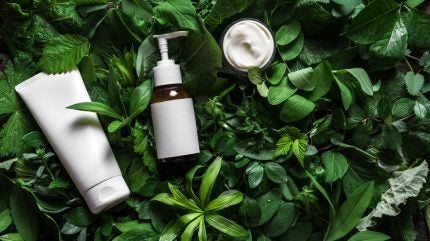
Consumer demand for sustainable beauty products has catalysed a transformation in the global cosmetics industry, with eco-friendly packaging becoming a key area of innovation and growth.
As environmental awareness continues to influence purchasing behaviour, cosmetic brands are increasingly seeking alternatives to conventional plastic packaging.

Discover B2B Marketing That Performs
Combine business intelligence and editorial excellence to reach engaged professionals across 36 leading media platforms.
This shift is driving the eco-friendly cosmetic packaging market towards steady expansion, with projections showing significant growth through 2034 and beyond.
Growing demand for sustainable beauty solutions
The rise in demand for green cosmetics is not merely a trend—it reflects a broader cultural shift towards responsible consumption. Shoppers are paying closer attention to the environmental footprint of their purchases, prioritising brands that embrace ethical sourcing, cruelty-free formulations, and recyclable or biodegradable packaging.
Market research suggests that eco-friendly cosmetic packaging is poised for sustained growth over the next decade.
Key factors behind this trend include tightening environmental regulations, consumer preference for minimal-waste solutions, and a spike in e-commerce, which has underscored the need for sustainable shipping materials.

US Tariffs are shifting - will you react or anticipate?
Don’t let policy changes catch you off guard. Stay proactive with real-time data and expert analysis.
By GlobalDataAs a result, major beauty companies are redesigning their product packaging to include materials such as glass, bamboo, post-consumer recycled plastics, and compostable biopolymers.
Notably, sustainable cosmetic packaging is no longer confined to niche or luxury brands. Mass-market players are also investing heavily in R&D to deliver environmentally friendly packaging options that are both functional and appealing.
Brands are introducing refillable containers, recyclable pouches, and packaging that doubles as storage to reduce waste.
Innovative materials and circular packaging strategies
Innovation in materials technology is reshaping the eco-conscious packaging landscape. Biodegradable plastics derived from corn starch or sugarcane, aluminium tubes, and FSC-certified paperboard cartons are gaining traction across the industry.
These materials offer the durability and shelf appeal needed for commercial success while also aligning with environmental goals.
In tandem with material innovation, circular economy principles are being integrated into packaging strategies. Refillable and reusable packaging systems are becoming more mainstream, reducing the demand for virgin materials and lowering overall carbon footprints.
For example, several brands now offer refill stations in stores or mail-back programmes for used packaging, incentivising repeat customers while promoting sustainability.
Minimalist and zero-waste packaging designs are also on the rise, with companies seeking to reduce excess components like outer boxes, inserts, and plastic film wraps.
In some cases, packaging is even designed to serve a secondary function—such as doubling as a beauty organiser or travel case—extending its lifecycle and reducing environmental impact.
Regulatory pressures and consumer education
Environmental legislation is playing a crucial role in shaping the eco-friendly cosmetic packaging market. In Europe, for instance, the EU’s Packaging and Packaging Waste Directive is pushing companies to meet ambitious recycling and waste reduction targets.
Similarly, the UK’s Plastic Packaging Tax, introduced in April 2022, has prompted manufacturers to increase the use of recycled materials in their packaging lines.
Such regulations are encouraging the development of more sustainable practices across the supply chain, from raw material sourcing to end-of-life disposal. Companies that fail to adapt risk not only financial penalties but also reputational damage among increasingly eco-aware consumers.
However, regulatory compliance is only part of the equation. Consumer education plays a vital role in driving sustainable packaging adoption. Brands that clearly communicate the environmental benefits of their packaging—through labelling, social media campaigns, or product demonstrations—tend to build stronger customer loyalty.
Transparency around recyclability, compostability, and carbon emissions helps customers make informed decisions and strengthens trust in the brand.
At the same time, third-party certifications such as Cradle to Cradle, Ecocert, and the Leaping Bunny logo help consumers identify genuinely sustainable products amidst a crowded marketplace.
These accreditations are fast becoming key differentiators in an industry where greenwashing is an ongoing concern.
Outlook for the eco-friendly cosmetic packaging market
As sustainability moves from a peripheral concern to a central business strategy, the future of eco-friendly cosmetic packaging looks robust. Forecasts indicate continued growth in this segment, with the global market projected to reach billions in value by the early 2030s.
This growth is expected to be particularly strong in Asia-Pacific and North America, where increasing urbanisation, rising disposable income, and growing environmental awareness are converging.
Emerging technologies—such as smart packaging that tracks usage or alerts users when a product needs replenishment—may also intersect with sustainability trends, offering novel ways to reduce waste and optimise product life cycles.
Ultimately, the success of eco-friendly packaging in the beauty industry will depend on balancing aesthetics, functionality, and affordability with environmental responsibility.
As consumer expectations evolve and sustainable innovation accelerates, brands that invest in greener packaging solutions today will be better positioned for long-term relevance and market leadership.





